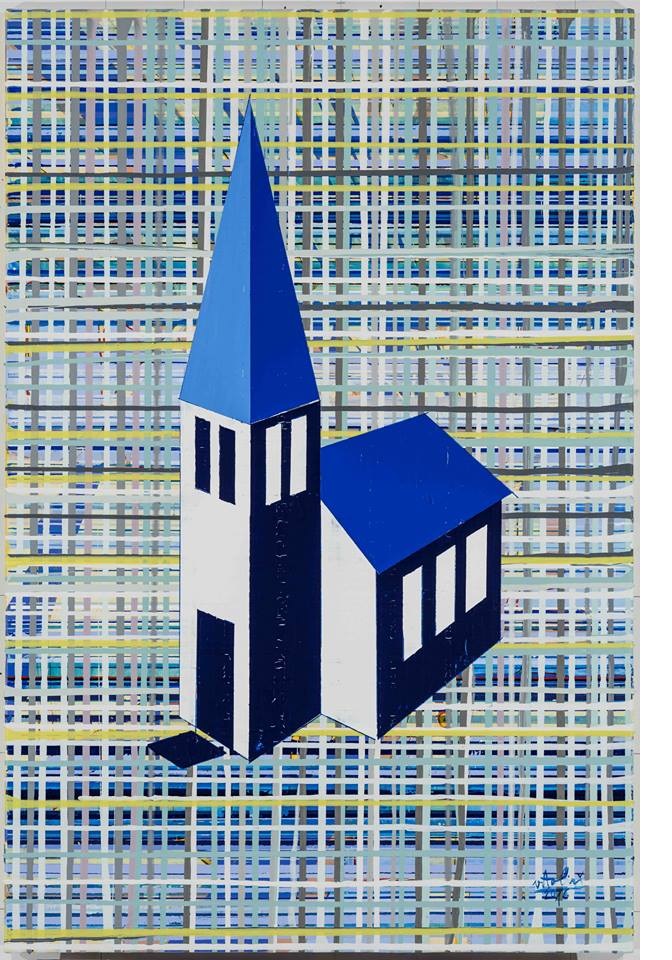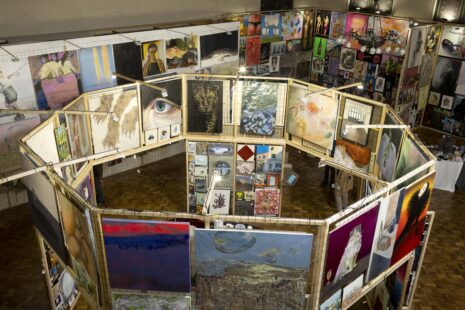
Andris Vītoliņš “Fundamentum B”, 2016. Acrylic on canvas
Architecture has a very prominent role in Andris Vītoliņš works. Many, with some knowledgeable in Latvian art, may know Vītoliņš by his mazes of steel and skyscrapers under construction. But what started out as urban exploring trips to factories has led to an understanding of architecture as the core element of a society’s political self-expression – like a cultural symptom. Last year, in the annual exhibition of the Tartu Artists Union of whic…h Vītoliņš is a member, he participated with a work inspired by what he saw on a trip to the Emirates, condensed in to a visionary geometric structure „Dealing with Arabs” (2015). Recent events seem to have shifted the authors attention from the east to the west, the one in trouble is now Abend Land itself that seems to believe in the possibility of a universally standardized and mass produced value system.
Interestingly Vītoliņš compositions have always concentrated attention on a particular object, disregarding the context. Taking in account that the environment of the object – cultural as well as natural – determines its perception, one is lead to guess that the missing context symbolize the inability of comprehensive perception. Vision is always incomplete. Does this mean future might still be undetermined since the universe evolves out of chaos? The depiction of this indeterminacy, is what Vītoliņš as an artist and painter, in my opinion, is centered on. That’s where all of his formal and technical experiments are focused on – the multiple layers of flowing paint, that underlay as well as overlay the sterilized churches.
Talking about the current series on display, the most noticeable element is the stencil based church. Taking in account Vītoliņš appeal to pop-art and pop-culture elements and knowing that he has worked in series before, it’s not something particularly extraordinary. Still, mechanical repetition on such a scale is something Vītoliņš has not done before and that’s why it feels literally frightening. What has trigged this? Does it signify the hopelessness of the situation? The lack of strength of the Abend Land to preserve itself? I don’t know and maybe even the author doesn’t. The truth of art is unconscious.
Text by Indrek Grigor
The exhibition stays open until 15th of May 2016 and a selection of Andris Vītoliņš´s works can also be seen at NOAR.
Further reading: an interview with the artist at Freundevonfreunden.com “Art, anarchy, and pornography: Creativity in Soviet Latvia”








